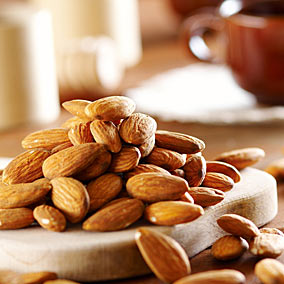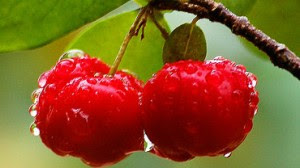Best Diet Tip No. 1: Drink
plenty of water or other calorie-free beverages.
People often mistake thirst for
hunger and end up eating junk when all they need is a glass of cool, crisp
water.
"If you don't like plain
water, try adding citrus or a splash of juice, or brew infused teas like mango
or peach, which have lots of flavor but no calories," says Cynthia Sass,
RD, a spokeswoman for the American Dietetic Association.
Best Diet Tip No. 2: Think
about what you can add to your diet, not what you should take away.
"It sounds like a lot, but
it is well worth it, because at the same time you are meeting your fiber goals
and feeling more satisfied from the volume of food," says Chef Laura
Pansiero, RD.
Also, you are less likely to
overeat because fruits and vegetables displace fat in the diet. And that's not
to mention the health benefits of fruits and vegetables. More than 200 studies
have documented the disease-preventing qualities of phytochemicals found in
produce, says Pansiero.
Her suggestion for getting more:
Work vegetables into meals instead of just serving them as sides on a plate.
"I love to take seasonal
vegetables and make stir-fries, frittatas, risotto, pilafs, soups, or layer on
sandwiches," Pansiero says. "It is so easy to buy a variety of
vegetables and incorporate them into dishes."
Best Diet Tip No. 3: Consider
whether you're really hungry.
 Whenever you feel like eating,
look for physical signs of hunger, suggests Michelle May, MD, author of Am I Hungry?
Whenever you feel like eating,
look for physical signs of hunger, suggests Michelle May, MD, author of Am I Hungry?
"Hunger is your body's way
of telling you that you need fuel, so when a craving doesn't come from hunger,
eating will never satisfy it," she says.
When you're done eating, you
should feel better – not uncomfortably full or tired (like that> guy).
"Your stomach is only the
size of your fist, so it takes just a handful of food to fill it
comfortably," says May.
Best Diet Tip No. 4: Be choosy
about nighttime snacks.
Mindless eating occurs most
frequently after dinner, when you finally sit down and relax.
"Sitting down with a bag of
chips or cookies in front of the television is an example of eating amnesia,
where you mindlessly eat without being hungry, but out of habit," says
American Dietetic Association spokesperson Malena Perdomo, RD.
 Either close down the kitchen
after a certain hour, or allow yourself a low-calorie snack, like a 100-calorie
pack of cookies or a half-cup scoop of low-fat ice cream. Once you find that
you're usually satisfied with the low-cal snack, try a cup of zero-calorie tea,
suggests Perdomo.
Either close down the kitchen
after a certain hour, or allow yourself a low-calorie snack, like a 100-calorie
pack of cookies or a half-cup scoop of low-fat ice cream. Once you find that
you're usually satisfied with the low-cal snack, try a cup of zero-calorie tea,
suggests Perdomo.
Best Diet Tip No. 5: Enjoy your
favorite foods.
"I think putting your
favorite foods off limits leads to weight
gain because
it triggers 'rebound' overeating," says Sass.
Instead banishing your favorite
foods altogether, be smart about them. Buy Oatmeal cookies instead of chocolate
chip, or buy one freshly baked cookie from a bakery instead of a box from a
grocery store.
"You can enjoy your favorite
foods, but you must do so in moderation," says Sass.
Best Diet Tip No. 6: Enjoy your
treats away from home.
When you need a treat, Ellie
Krieger, RD, host of Food Network's Healthy
Appetite, suggests taking a walk to your local ice cream parlor or planning
a family outing.
"By making it into an
adventure, you don't have to worry about the temptation of having treats in the
house, and it is a fun and pleasurable way to make it work when you are trying
to lose weight,"
says Krieger.
And for those times you can't up
and leave? Krieger stocks her kitchen with fresh fruit, which is just as good
or better.
Best Diet Tip No. 7: Eat
several mini-meals during the day.
If you eat fewer calories than
you burn, you will lose weight. But when you're hungry all the time, eating
fewer calories can be challenging.
"Studies show people who eat
4-5 meals or snacks per day are better able to control their appetite and
weight," says obesity researcher Rebecca Reeves, DrPH, RD.
She recommends eating several
small meals/snacks through the day as opposed to three whole meals.
Best Diet Tip No. 8: Eat
protein at every meal.
 Protein is more satisfying than
carbohydrates or fats, and hence may be the new secret to weight control.
Protein is more satisfying than
carbohydrates or fats, and hence may be the new secret to weight control.
"Diets higher in protein [and] moderate in carbs,
along with a lifestyle of regular exercise, have an excellent potential to help
weight loss," says University of Illinois protein researcher Donald
Layman, PhD.
Getting enough protein helps
preserve muscle mass and encourages fat burning while keeping you feeling full.
So be sure to include healthy protein sources, like yogurt, cheese, nuts, or
beans, at meals and snacks.
Best Diet Tip No. 9: Spice it
up.
Add spices or chillies to your
food for a flavor boost that can help you feel satisfied.
"Food that is loaded with
flavor will stimulate your taste buds and be more satisfying so you won't eat
as much," says Perdomo.
Best Diet Tip No. 10: Stock
your kitchen with healthy convenience foods.
Having ready-to-eat snacks and
meals-in-minutes staples on hand sets you up for success. You'll be less likely
to hit the drive-through or call in a pizza order if you can make a healthy
meal in 5 or 10 minutes.
 Sass stocks her kitchen with:
Sass stocks her kitchen with:
·
94% fat-free microwave popcorn (20-25 calories per cup, and you
can make it in two minutes or less)
·
Frozen vegetables
·
Bags of pre-washed greens
·
Canned diced tomatoes
·
Canned beans
·
Whole-grain wraps or pitas
·
Pre-cooked grilled chicken breasts
·
A few containers of pre-cooked brown rice
Within minutes, she can toss
together something healthy and tasty.
 Best Diet Tip No. 11: Order
children’s portions at restaurants.
Best Diet Tip No. 11: Order
children’s portions at restaurants.
"When you are eating out,
order a child's pizza or a small sandwich as an easy way to trim calories and
get your portions under control," suggest Perdomo.
Another trick is to use smaller
plates. This helps the portions look like more. Trick your eyes into tricking
your stomach.
Best Diet Tip No. 12: Eat foods
in season.
"If you don't love certain
fruits or vegetables, it could be because you ate them out of season when they
have little taste or flavor," says Pansiero. "When you eat
seasonally, fruits and vegetables are more flavorful, at their best, and I
promise you won't be disappointed."
At GiGi's Trattoria, her
restaurant in Rhinebeck, N.Y., she serves simple fruit desserts, like naturally
sweet strawberries topped with aged balsamic vinegar, or low-fat yogurt or
fresh berries in a compote.
Best Diet Tip No. 13: Swap a
cup of pasta for a cup of vegetables.
Simply by eating less pasta or
bread and more veggies, you could lose a dress or pants size in a year.
"You can save from 100-200
calories if you reduce the portion of starch on your plate and increase the
amount of vegetables," says Sass.
Best Diet Tip No. 14: Use
non-food alternatives to cope with stress.
Sooner or later, you're going to
be faced with a stressful situation. Instead of turning to food for comfort, be
prepared with some non-food tactics that work for you.
Sass suggests reading a book, Music,
writing in a journal, practicing meditation, taking up a sport or even watching
a movie.
Best Diet Tip No. 15: Be
physically active.
Although it may seem
contradictive, don't use exercise either to punish yourself for eating or to
"earn" the right to eat more.
"When you do, it sets up a
negative thought pattern, which is why so many people say they hate to
exercise," says May.
Instead, focus on how great you
feel, how much better you sleep and how much more energy you have when you
exercise. Physical activity is good for you whether or not you are trying to
lose weight, so keep at it and make it part of your daily routine.
 Lean
meats, such as sirloin steaks, as well as turkey, chicken, tuna, lentils and
fortified cereals, are rich in iron, the mineral that is responsible for
forming hemoglobin and carrying oxygen in your red blood cells. Without enough
oxygen carrying hemoglobin, your energy flags and your metabolism falls.
Because athletes are so active they may need about 30 percent more iron than
the general population. Supplementing iron can be risky, so it's best to get it
from food.
Lean
meats, such as sirloin steaks, as well as turkey, chicken, tuna, lentils and
fortified cereals, are rich in iron, the mineral that is responsible for
forming hemoglobin and carrying oxygen in your red blood cells. Without enough
oxygen carrying hemoglobin, your energy flags and your metabolism falls.
Because athletes are so active they may need about 30 percent more iron than
the general population. Supplementing iron can be risky, so it's best to get it
from food.

























